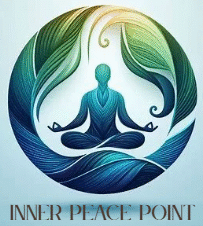
Mindfulness meditation seems to be everywhere these days, and it’s not just a trendy buzzword. So what’s the deal, and why should a beginner like you care? Well, it’s all about being present. Practicing mindfulness means actively tuning into the current moment – like really noticing that first sip of coffee or the feeling of the sun on your face.
People have hopped onto the mindfulness meditation train for lots of reasons. Stress? It can help. Anxiety? Yep, works on that too. It’s like a mini-vacation where you get to unplug and just be. You might even start seeing improvements in your focus and overall happiness.
Wondering what’s different about mindfulness meditation compared to other types? The focus here is on paying attention without judging. Unlike other practices where you might repeat a mantra or try to empty your head, mindfulness invites you to acknowledge all those thoughts and feelings without labeling them good or bad. Essentially, it’s like watching clouds float by instead of trying to control the sky.
For beginners, having realistic expectations is key. Forget the clichéd images of meditating gurus on mountaintops. Mindfulness can happen in your living room or during a walk in the park. Start small – think five minutes a day. Building this habit is all about patience and being kind to yourself. Even if your mind wanders (and it probably will), that’s okay. Returning your attention to the moment is part of the practice.

How to Meditate Mindfully: A Step-by-Step Approach
Beginners often wonder how to start meditating mindfully. It’s simpler than it sounds. At its core, mindful meditation is about finding a quiet spot, sitting comfortably, and picking a focus – usually the breath. But, let’s break it down into a few easy steps.
Pick a time and space that’s free of distractions. Morning, noon, or night – it’s up to you. Just make sure it’s a place where you feel comfortable and won’t be distracted by your phone or random noises. Consistency is key, so sticking to a routine helps a lot.
Get settled in. You can sit on a chair, cross-legged on the floor, or even lie down if that feels right. The idea is to be comfy yet alert – no need for fancy poses.
Once you’re situated, close your eyes (or keep a soft focus if closing them feels weird) and start noticing your breath. Feel the inhale and exhale. When your mind wanders, which it totally will, just gently bring your attention back to your breath. It’s like training a puppy – patience is important.
Aiming for five to ten minutes is a solid start if you’re just dipping your toes in. As you get more comfortable, feel free to gradually increase that time. Remember, it’s not about how long you meditate, but how often, so try to practice daily.
Hitting roadblocks or wondering if you’re “doing it right” is normal. We all get them! Mindfulness is a practice, not a performance. Progress comes with time and consistency. You might even find challenges easing as you keep going forward.

Delving Into the 5 R’s of Meditation
Ever stumbled across the 5 R’s of meditation and wondered what that’s about? It’s a handy framework that can really up your mindfulness game. Recognize, Relax, Re-center, Reflect, and Realign. Each step offers a little guidepost along your mindfulness journey, making the whole process feel way more manageable.
Recognize is where it all starts. It’s about noticing those little nudges from life telling you it’s time to pause and check in with yourself. This can be anything from feeling stressed to simply noticing your mind racing.
Relax comes next. You’re aiming to be like an unbothered beach-goer, letting the waves do their thing while you simply chill. Breathing exercises or listening to calming music might do the trick to get you there.
Re-center is the pivotal point. Here, you pull your thoughts back to the present. Using your breath, a mantra, or even a soft focus point helps dispel distractions and draw you into the now.
Reflect focuses on what you’ve uncovered during your meditation. Instead of analyzing, you’re just observing thoughts and feelings with curiosity, much like scrolling through a social media feed but in your mind.
Realign wraps it all up. After reflecting, how does that experience fit with what you need or pursue next? Maybe it’s about adjusting your goals or approach in life to be more aligned with your mindful observations.

Simple Mindfulness Meditation Techniques to Try
Mindfulness meditation isn’t a one-size-fits-all, and there are loads of techniques out there for beginners to explore. Finding the right fit can make all the difference when you’re starting out.
Guided breathing exercises are a great place to kick things off. Try inhaling deeply to a count of four, holding briefly, and exhaling to another count of four. It helps you focus and keeps those wandering thoughts at bay.
Body scanning is a technique where you shift your attention across different parts of your body, noticing sensations. It doesn’t just reduce stress; it also boosts your awareness of how your body holds tension.
Ever thought about mindful walking? Yes, walking! It’s all about syncing your steps with your breath and being present with each footfall. Plus, there’s an added bonus of getting fresh air and light exercise along the way.
Using an anchor word or phrase, like “peace” or “calm”, can keep you rooted in the moment. Whenever distractions pop up, you repeat your anchor word to pull your focus back.
Then there’s loving-kindness meditation, which is a way to cultivate compassion and positivity. By focusing on sending well wishes to yourself and others, it can turn a sour mood into a sweet one.

Exploring the 555 Rule Meditation for Enhanced Focus
So you’ve got the basics down, but looking to spice things up? Meet the 555 rule meditation. It’s a killer technique for those who want to boost their focus while keeping it simple.
Wondering what the 555 rule actually is? It’s all about time management magic. Spend 5 minutes setting your intention, 5 minutes engaging in deep breathing, and another 5 reflecting on what just happened. The beauty? You’ve wrapped up your mindful practice in just 15 minutes.
Setting intentions is about getting clear with yourself. What do you want from this session? Clarity on a project? Less stress? Setting a solid intention can shape your focus.
Deep breathing is where the magic happens. For those 5 minutes, you’re completely in the zone, inhaling deeply through your nose, exhaling out of your mouth. It grounds you faster than an airplane landing.
Reflection time isn’t about judgement. It’s a moment to see what bubbled up during your practice. Did you gain new insights? Feelings unlocked? Well spent time.
People who’ve added the 555 rule to their daily routine often rave about increased concentration and lessened stress. It’s a good reminder that sometimes, less is more, especially when it comes to mindfulness.
For newbies trying the 555 for the first time, remember it’s about exploration, not perfection. Some days might feel easier than others, and that’s alright. Keep at it, find your rhythm, and see what shifts.
Disclaimer: The content on this website is for informational purposes only, and should not replace professional medical advice.

